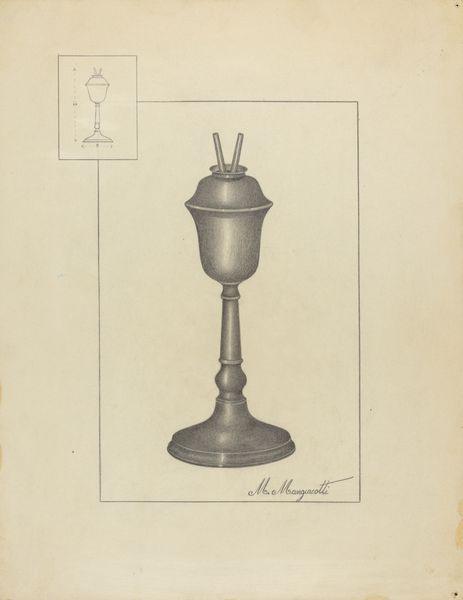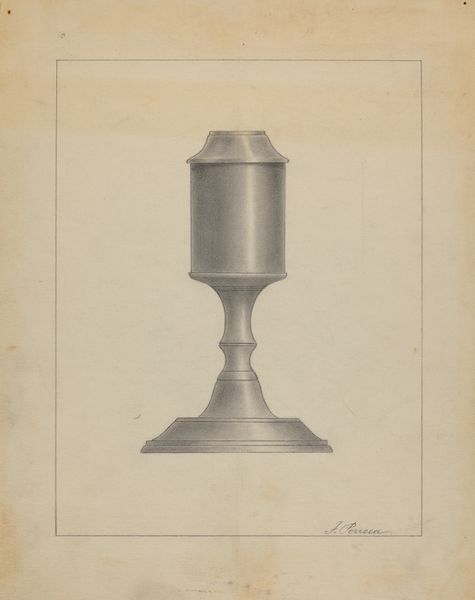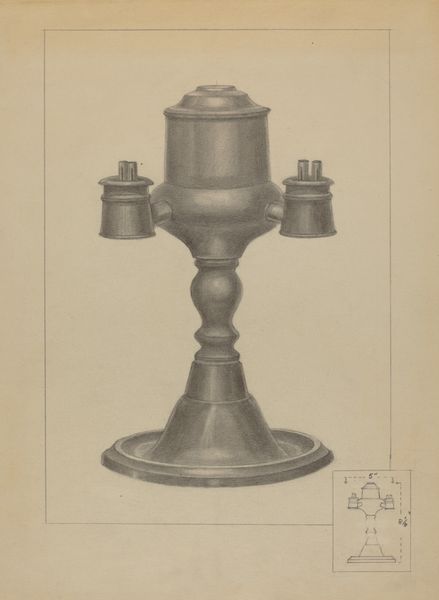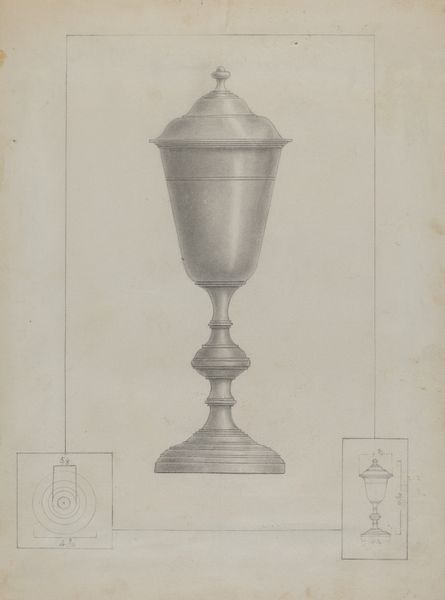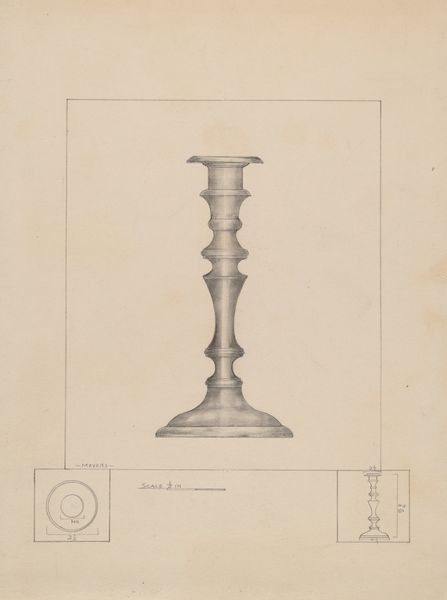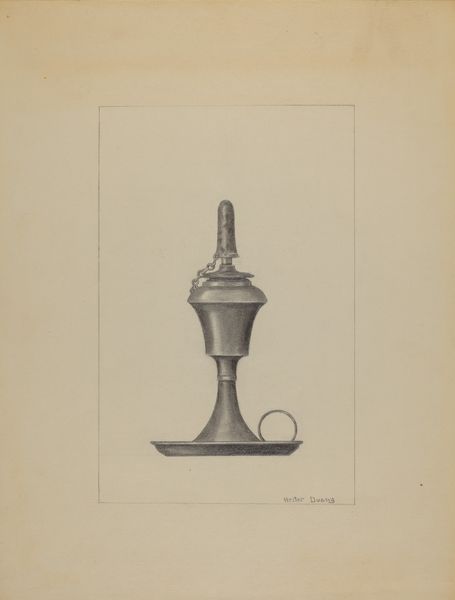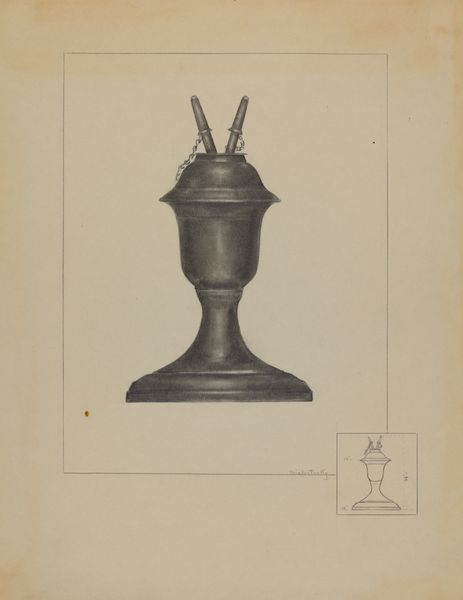
drawing, paper, pencil
#
drawing
#
paper
#
pencil
#
academic-art
Dimensions: overall: 29.8 x 22.8 cm (11 3/4 x 9 in.)
Copyright: National Gallery of Art: CC0 1.0
Curator: Welcome. We're standing before George Nelson's "Lamp," a pencil drawing on paper dating to around 1936. It's a precise rendering of a lamp design. Editor: My first impression is a subdued elegance, almost monumental despite being a drawing. The subdued palette amplifies its symmetrical, vertical design, suggesting both solidity and refined balance. Curator: It evokes that early machine age aesthetic, doesn't it? There’s a visual lineage you can trace back to classical forms, yet re-imagined through an industrial lens. It is both familiar and somehow futuristic. Do you think the choice of rendering it in pencil enhances the industrial mood? Editor: Absolutely. The tonal gradations created with the pencil, almost simulating metallic surfaces, underscores its material potential—you can practically feel the cold metal it aspires to become. The formal arrangement of rounded shapes—the lamp's head, the column, and base—exudes an orderly calm. I wonder about the two chimney like projections atop, are these gas or electrical? Curator: Ah, interesting that you zeroed in on that aspect, because, of course, the lamp, from time immemorial, has always been a carrier of symbolic significance. Representing enlightenment, guidance, and domestic comfort; its symbolism echoes across cultures and through centuries, illuminating the path. Its glow serves as a beacon of safety and understanding. Nelson taps into that. The duality that you noticed probably points to the debate of new electrical power over gas. Editor: And structurally, Nelson balances complexity with an intrinsic clarity. The careful articulation of the form provides a visual pleasure. But where do we see evidence of his own artistic vision here? Isn't this kind of rendering common? Curator: Nelson was envisioning these utilitarian designs, of course, which brings in not only aesthetic satisfaction but, crucially, practicality, efficiency, and cost-effectiveness. Notice how it invites accessibility to modern design and, arguably, contributes to shaping everyday experiences through thoughtfully designed objects. Editor: That's interesting to consider. His ability to harmonize industrial aspirations with timeless appeal transforms a simple design drawing into an idea of potential influence. Curator: Yes. And viewing "Lamp" offers more than just appreciation of artistic precision; it inspires contemplating the relationship between form, utility, and how designs shape our worldviews and aspirations. Editor: I agree; it's a reminder of the often overlooked artistry found in practical objects, inviting us to consider the historical symbolism and significance in the art.
Comments
No comments
Be the first to comment and join the conversation on the ultimate creative platform.

